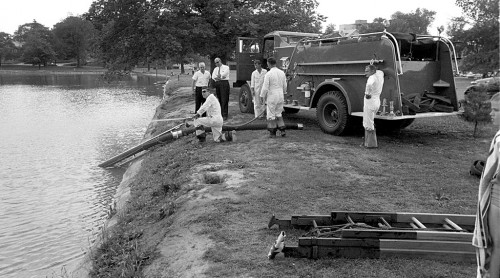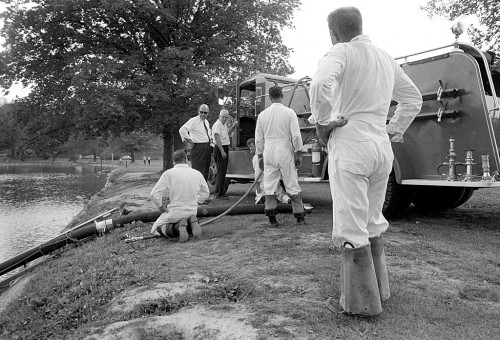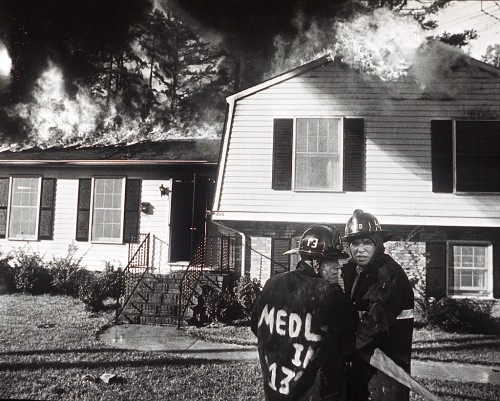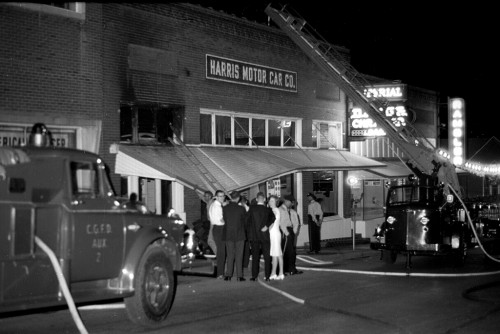 The Harris Motor Company fire at the northeast corner of Broadway and Lorimier wasn’t all that exciting, but it did capture some interesting things in the background of a couple of shots.
The Harris Motor Company fire at the northeast corner of Broadway and Lorimier wasn’t all that exciting, but it did capture some interesting things in the background of a couple of shots.
I don’t know that I was ever in the building, but Fred Lynch and Sharon Sanders did a pretty good job of nailing down the history of the landmark building in Fred’s blog.
Idan-Ha Hotel sign
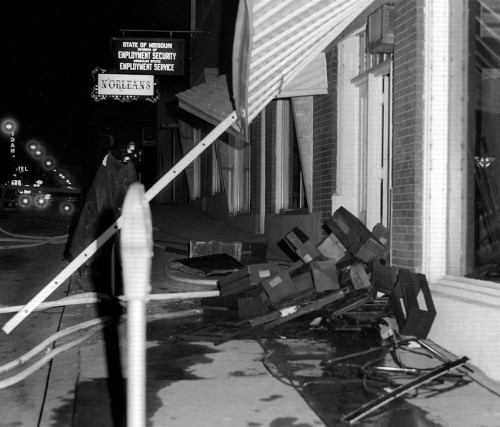 You can see the Idan-Ha Hotel sign off in the distance on the left. The N’Orleans sign shows up behind one for the State of Missouri Employment Service. The Idan-Ha burned in 1989, and the N’Orleans is sitting empty today.
You can see the Idan-Ha Hotel sign off in the distance on the left. The N’Orleans sign shows up behind one for the State of Missouri Employment Service. The Idan-Ha burned in 1989, and the N’Orleans is sitting empty today.
Built in 1915
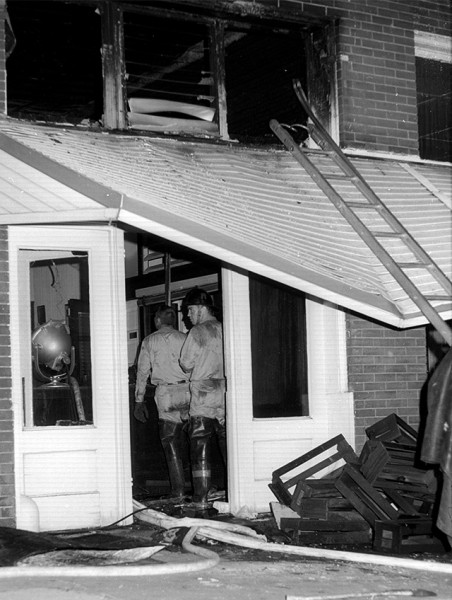 Fred’s blog said the building was constructed in 1915. In 1937, Harris Motor Car Co. razed the adjoining Dr. Adolph List house, built in 1888, to expand its operation. Another story noted that the List house was modeled after a German castle.
Fred’s blog said the building was constructed in 1915. In 1937, Harris Motor Car Co. razed the adjoining Dr. Adolph List house, built in 1888, to expand its operation. Another story noted that the List house was modeled after a German castle.
Turned into apartments in 2001
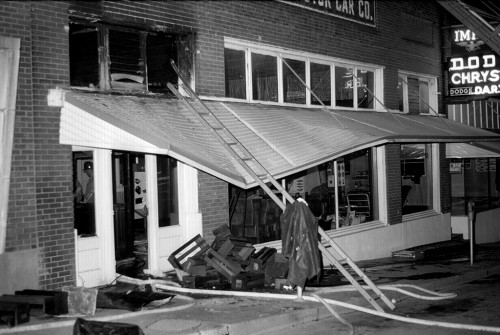 I couldn’t find a story about the fire, but there was an ad in the Dec. 3, 1965, Missourian saying to watch for the Grand Opening of Harris Motor Car Co. The 1968 City Directory listed Harris Motor Car Co. at Highway 61 North and Independence.
I couldn’t find a story about the fire, but there was an ad in the Dec. 3, 1965, Missourian saying to watch for the Grand Opening of Harris Motor Car Co. The 1968 City Directory listed Harris Motor Car Co. at Highway 61 North and Independence.
In 1968, Charmin, which was building its new plant near Neely’s Landing, leased space in the “former Harris Motor Car Building.” In 1971 the paper reported that the building had been converted into an apartment complex by Vernon Rhodes.

